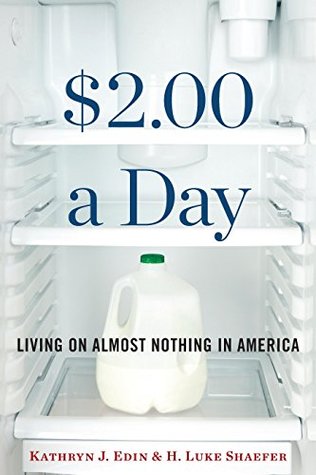More on this book
Community
Kindle Notes & Highlights
Read between
April 10, 2021 - March 4, 2023
It is not enough to provide material relief to those experiencing extreme deprivation. We need to craft solutions that can knit these hard-pressed citizens back into the fabric of their communities and their nation.
it is typically the opportunity to work that is lacking, not the will, and that ensuring work opportunity would do no end of good.
The routine, the ability to get lost in one’s work, may have a certain healing power.
With the routine and structure that a job provides, and with access to quality mental health services, it seems possible that Jennifer and Rae might be able to really get a handle on their mental health challenges.
Can firms afford to treat their workers better? New research shows that when workers are treated well, they work harder and more productively, delivering value to investors and customers alike.
Restoring the relationship between employers and employees may be especially critical for the $2-a-day poor, who tend to have complex personal lives that may spill over into their work lives. Only employers who know their employees personally can exercise the discretion to discern whether someone like Rae, the two-time “cashier of the month,” has missed her shift because she’s a shirker or is a valued employee who has hit a rough patch.
part of the solution to the affordable housing crisis is to increase the incomes of renters.
ensuring work opportunity might well provide benefits that trickle up to landlords, allowing them to make apartments available at lower prices.
Factors not related to the availability of jobs can throw families into crisis, especially those whose lives are sometimes overwhelmingly complicated. In difficult times, they need a real safety net to catch them. In-kind benefits such as SNAP and Medicaid offer a lifeline to families in these straits, but they just aren’t the same as cash. They don’t offer the flexibility of cash—the kind of flexibility that the stories in this book have shown to be so crucial. For many of our families, their downward spiral into $2-a-day poverty might have been reversed by a timely infusion of cash.
One idea is to provide those claiming the EITC the option to “save” some of their refund—to have it disbursed at intervals throughout the year rather than in a lump sum at tax time—and offer them incentives to do so. That way, when families hit a rough spot or face a sudden crisis, they have a self-made safety net to draw on.
While welfare has never been in line with America’s core values, help for the poor has. Americans’ sense of, and desire for, community—one of the core values Ellwood pointed to in Poor Support—mandates that we help those who, through no fault of their own, can’t help themselves. While there is no going back to AFDC, helping TANF fulfill its mission—as a temporary hand up—is a worthy goal, one that most Americans may support if the overarching direction of antipoverty policy is to ensure work opportunity for all.
Too often, America has gone down the road of trying to shame those in need. We’ve put up barriers. We’ve made people jump through hoop after hoop—all based on the not-so-subtle presumption that they are lazy and immoral, intent on trying to put something over on the system. TANF is a perfect example. Yet research shows that the intrusive treatment people typically receive at the welfare office can undermine their confidence in government and erode political participation. It stands to reason that this kind of treatment could also erode the very confidence that is so necessary for pulling
...more
the experience of surviving a spell of extreme destitution often leaves deep physical and emotional wounds—wounds that further serve to separate, not incorporate.
Yet despite all they’ve been through, despite the abuse and trauma, the hunger and fear, despite the anger they carry with them at what they have endured, many of the everyday experiences of the $2-a-day poor are—truly—American to the core.


